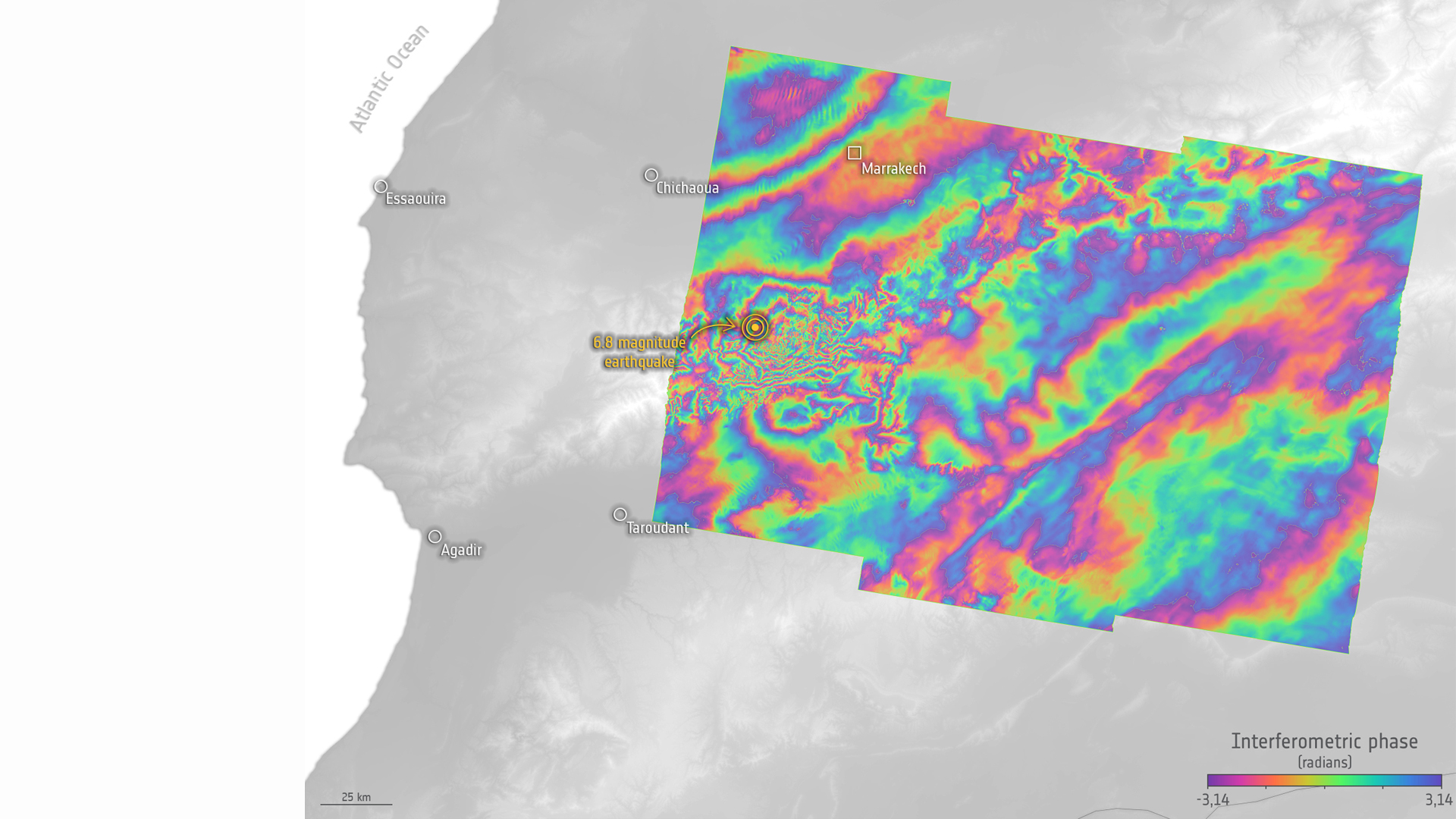Satellites reveal how deadly Morocco earthquake moved ground (photos)
The 6.8 magnitude earthquake that struck western Morocco last week shifted Earth's surface by up to 6 inches.

Satellite measurements have revealed the extent of ground movement caused by the 6.8-magnitude earthquake that struck Morocco last week, killing nearly 3,000 people.
The earthquake hit a rural region in the Atlas Mountains about 47 miles (75 kilometers) from the city of Marrakech on Friday evening (Sept. 8). This area, according to the European Space Agency (ESA), lies on the line between the European and African tectonic plates, which makes the region prone to earthquakes.
Radar measurements made by Europe's two Sentinel-1 satellites before and after the disaster reveal how much the two plates shifted during the quake. According to the BBC, the upward movement of the surface amounted to a maximum of 6 inches (15 centimeters), while in other areas the ground sank by up to 4 inches (10 cm)
Related: GPS satellites may be able to detect earthquakes before they happen
The earthquake razed entire villages, burying families in the rubble of what used to be their homes.
The images generated from the satellite measurements are helping scientists and rescue teams assess the situation and the risk of subsequent tremors, ESA said in the statement.
"Satellites orbiting Earth are unique in their ability to not only provide wide views of affected areas but also very detailed information, ESA's Director of Earth Observation Programmes, Simonetta Cheli, said in the statement. "Since the Copernicus Sentinel-1 mission carries a radar, it can see through clouds and is also often used for mapping serious floods. In the case of the Moroccan earthquake, the mission's value has been to measure how the surface has shifted, which will be important once the immediate crisis is over, and restoration can start."
Breaking space news, the latest updates on rocket launches, skywatching events and more!
The two images used to create the visual, a so-called interferogram, that capture the surface displacement were taken on Aug. 30, over a week before the earthquake struck, and on Sept. 11, three days after the disaster.

Tereza is a London-based science and technology journalist, aspiring fiction writer and amateur gymnast. She worked as a reporter at the Engineering and Technology magazine, freelanced for a range of publications including Live Science, Space.com, Professional Engineering, Via Satellite and Space News and served as a maternity cover science editor at the European Space Agency.
